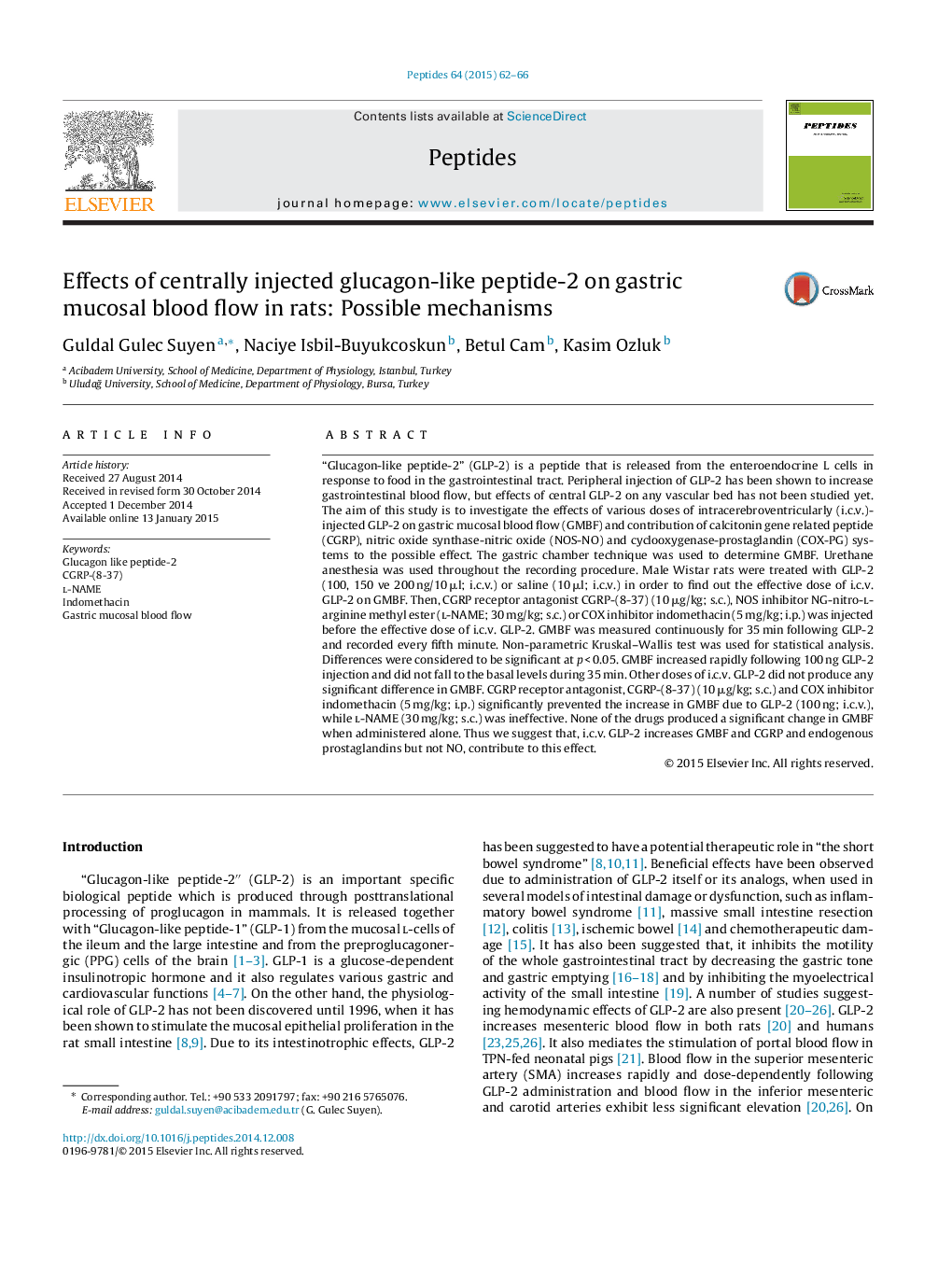| کد مقاله | کد نشریه | سال انتشار | مقاله انگلیسی | نسخه تمام متن |
|---|---|---|---|---|
| 2005970 | 1541715 | 2015 | 5 صفحه PDF | دانلود رایگان |
• Intracerebroventricularly injected GLP-2 increased gastric mucosal blood flow.
• CGRP-(8-37) and indomethacin, but not l-NAME prevented this effect.
• CGRP and endogenous prostaglandins contribute to the effect of GLP-2 on blood flow.
• GLP-2 may be considered as a brain–gut peptide.
“Glucagon-like peptide-2” (GLP-2) is a peptide that is released from the enteroendocrine L cells in response to food in the gastrointestinal tract. Peripheral injection of GLP-2 has been shown to increase gastrointestinal blood flow, but effects of central GLP-2 on any vascular bed has not been studied yet. The aim of this study is to investigate the effects of various doses of intracerebroventricularly (i.c.v.)-injected GLP-2 on gastric mucosal blood flow (GMBF) and contribution of calcitonin gene related peptide (CGRP), nitric oxide synthase-nitric oxide (NOS-NO) and cyclooxygenase-prostaglandin (COX-PG) systems to the possible effect. The gastric chamber technique was used to determine GMBF. Urethane anesthesia was used throughout the recording procedure. Male Wistar rats were treated with GLP-2 (100, 150 ve 200 ng/10 μl; i.c.v.) or saline (10 μl; i.c.v.) in order to find out the effective dose of i.c.v. GLP-2 on GMBF. Then, CGRP receptor antagonist CGRP-(8-37) (10 μg/kg; s.c.), NOS inhibitor NG-nitro-l-arginine methyl ester (l-NAME; 30 mg/kg; s.c.) or COX inhibitor indomethacin (5 mg/kg; i.p.) was injected before the effective dose of i.c.v. GLP-2. GMBF was measured continuously for 35 min following GLP-2 and recorded every fifth minute. Non-parametric Kruskal–Wallis test was used for statistical analysis. Differences were considered to be significant at p < 0.05. GMBF increased rapidly following 100 ng GLP-2 injection and did not fall to the basal levels during 35 min. Other doses of i.c.v. GLP-2 did not produce any significant difference in GMBF. CGRP receptor antagonist, CGRP-(8-37) (10 μg/kg; s.c.) and COX inhibitor indomethacin (5 mg/kg; i.p.) significantly prevented the increase in GMBF due to GLP-2 (100 ng; i.c.v.), while l-NAME (30 mg/kg; s.c.) was ineffective. None of the drugs produced a significant change in GMBF when administered alone. Thus we suggest that, i.c.v. GLP-2 increases GMBF and CGRP and endogenous prostaglandins but not NO, contribute to this effect.
Journal: Peptides - Volume 64, February 2015, Pages 62–66
